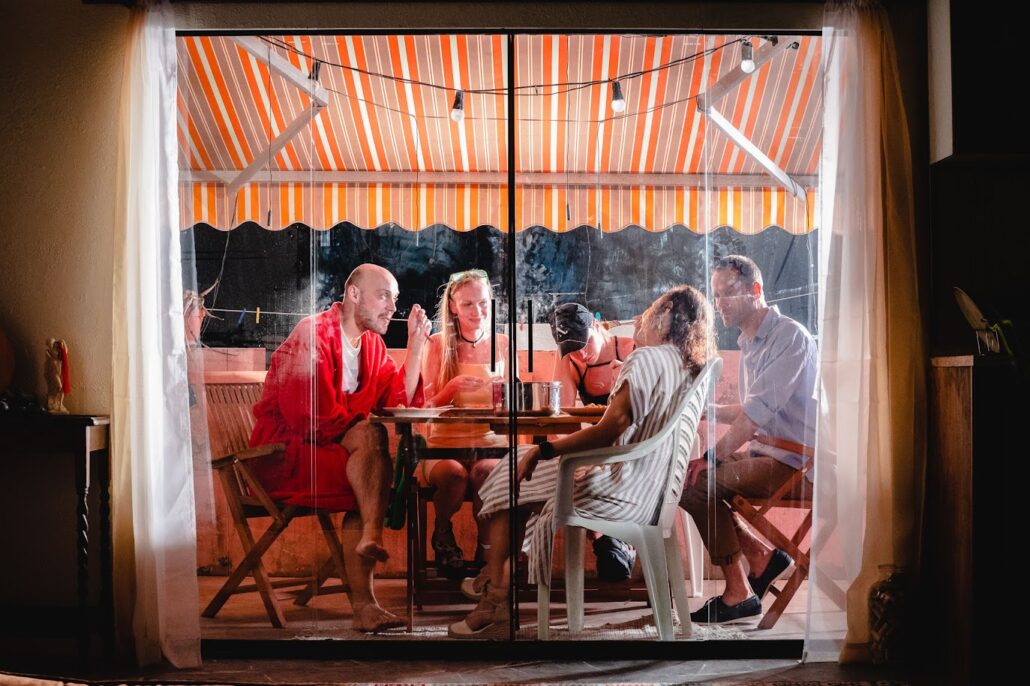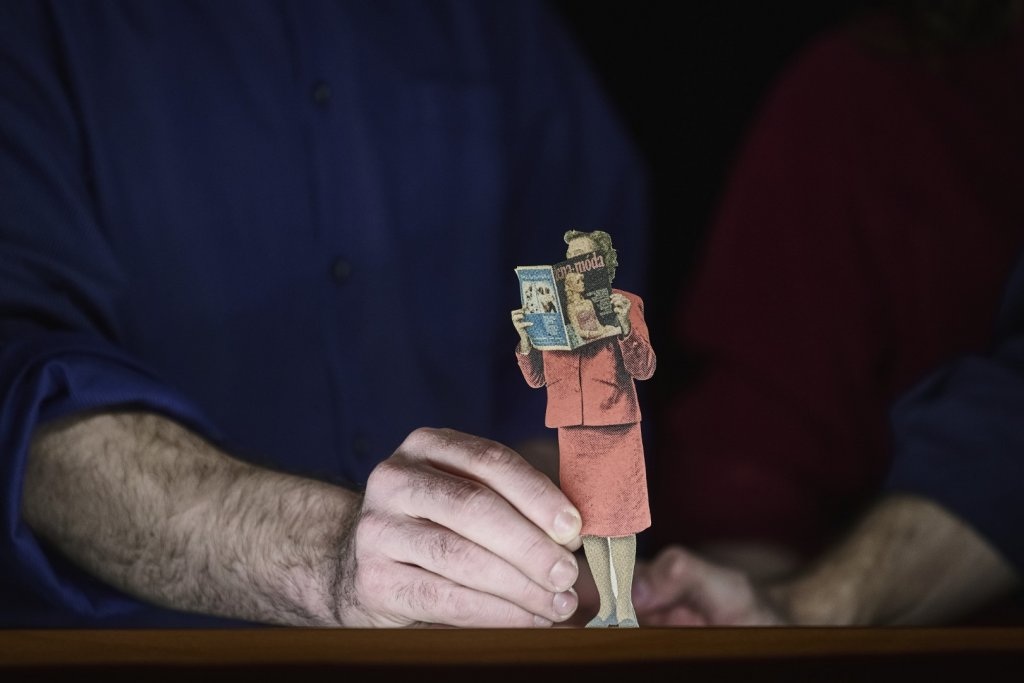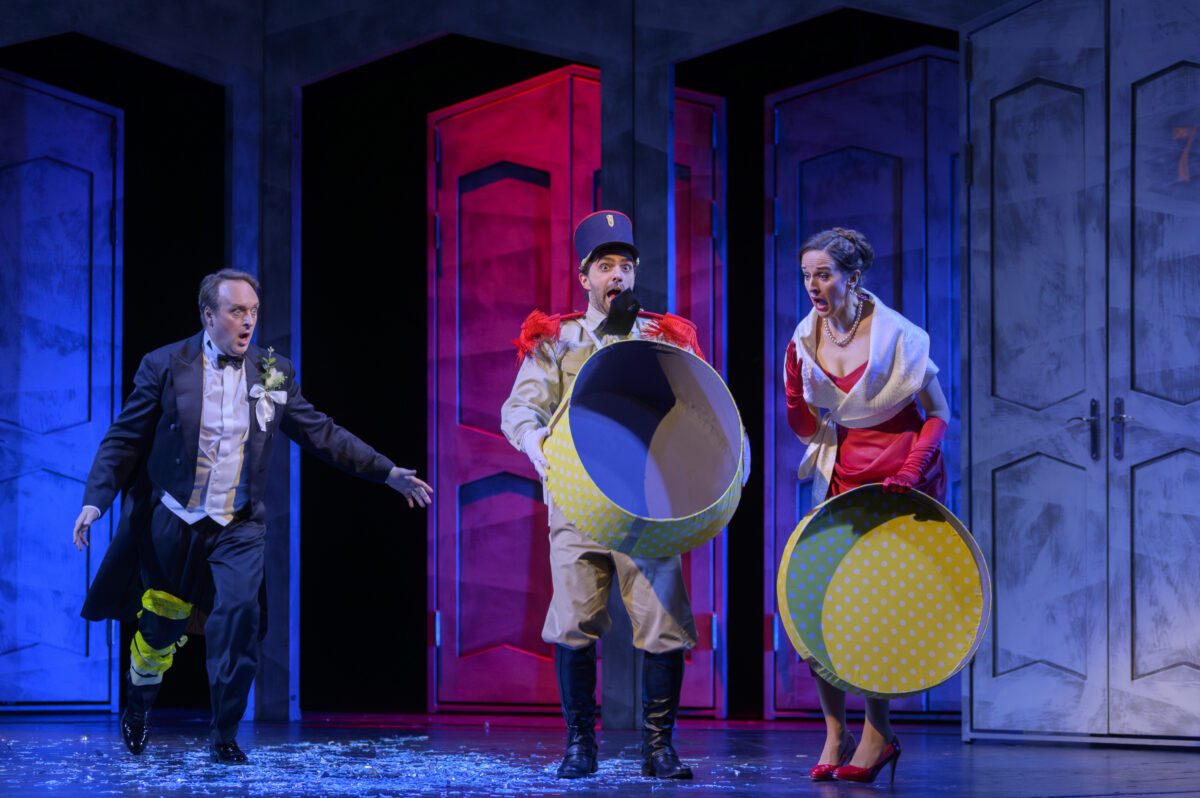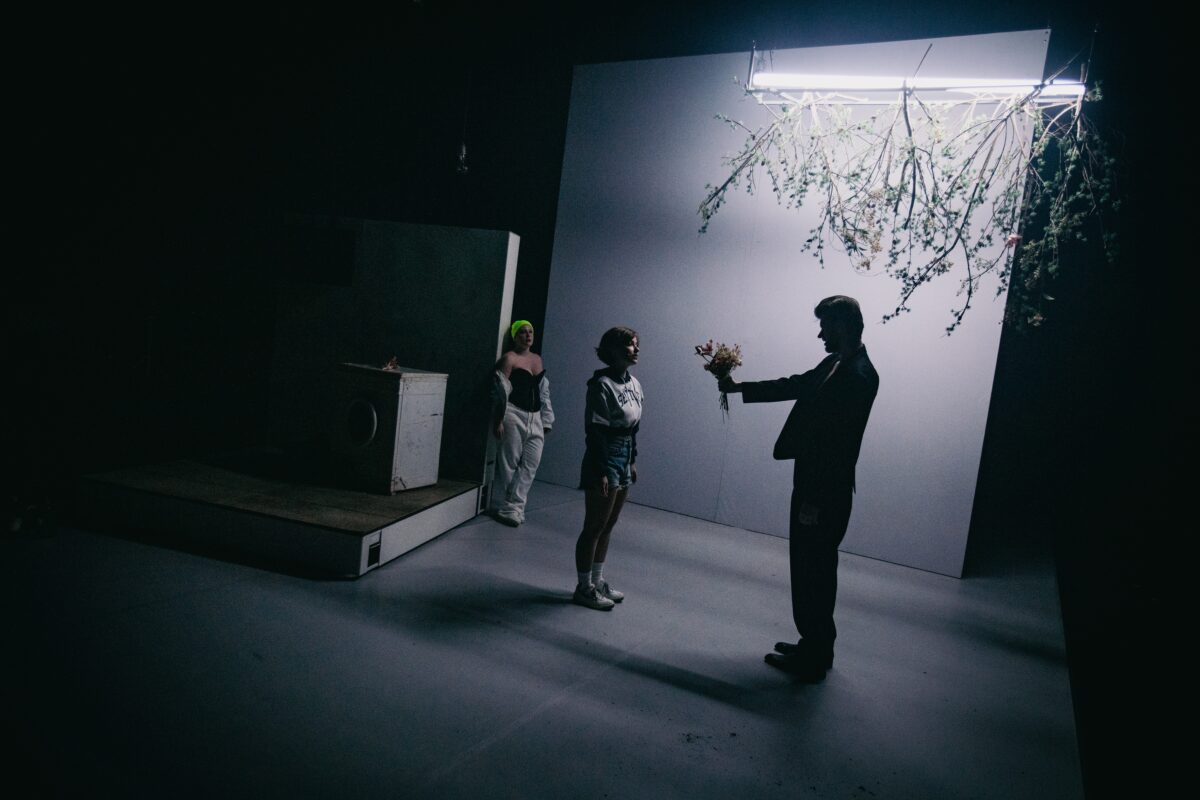Interview with IVAN BURAJ
Sustainable Counterculture Needs the Space for Institutionalised Experiment
IVAN BURAJ as director and artistic director of HaDivadlo in Brno is a noteworthy figure of the Czech experimental theatre. In his theatre company, he works with themes such as ecology, sustainable theatre-making, looking for a way out of the trap of anthropocentrism, and dissolving the boundary between the theatre and the audience.
Why does he feel that an artistic experiment supported by an institution is important and what does HaDivadlo do for sustainable existence?
HaDivadlo in Brno, where you are the Artistic Director, is part of the Centre for Experimental Theatre (CET), the city’s umbrella organisation for three autonomous progressive theatres (HaDivadlo, Goose on a String Theatre and Terén). CET fully supports the companies’ diversity. By doing so, it creates an environment for institutionalised artistic experiment. What else makes CET “rare” in the Czech cultural field?
At times where we are in danger that the economy will become the sole focus through which we will see reality, the Centre for Experimental Theatre has, true to its name, a certain unparalleled ambition to search and take risks. CET has a charmingly stubborn and permanently self-actualising pledge as an organisation which applies to all the people who work there. This pledge could be defined as an attempt to create socially engaged, countercultural, strange, original, avant-garde, progressive, and sustainable theatre. Sometimes we do well, sometimes there is room for improvement. But I believe that all of us have this internalised commitment to this difficult and slightly utopian concept – to create experimental theatre within an institution.
I note that in many post-communist countries, there is a great deal of suspicion towards institutional oversight of experimental culture. The memory of state-sanctioned culture of the former regime is still alive in people’s minds and it smacks of censorship and subjugation. In the contemporary context, I’m certain that it’s exactly the reverse – without the stability of institutional support, high quality experimental culture has no chance. I think the notion of a self-sufficient, innovative theatre that can survive alone is a myth. Innovative theatre has to be allowed to make mistakes, it has to have a “safe space for danger” and it has to be non-profit in its nature. It is not a business but a public service because it is of huge value for the quality of democracy and the whole society. It doesn’t only concern those who visit but it touches the whole society in intangible, immeasurable ways. When we resign on the idea of institutional support for experimental culture, the only alternative that remains is the logic of the market and profit that forces the artists to engage in commercially successful projects. Such projects by design tend not to take risks because the market is forcing them to passively fulfil the demand and follow a scheme that is already established. It wants bums on seats with something that works for the audience. Our dream about the alternative culture of the 1990s and the 2000s is gradually morphing into a nightmare with overworked and burned-out artists who have to be administrators at the same time, who battle a permanent state of uncertainty and serious staffing issues. Already, the question of pensions for our artists, who have worked all their lives to create art outside of institutions and are now burned-out with no mechanisms available to ensure dignity and decent retirement for them, is becoming a huge topic.
For several seasons, you have been dealing with some of the most pressing themes in our society in HaDivadlo: climate crisis, the effects of the Anthropocene, exhausting over-production and the pressure for constant – not only economic – growth. The 2021/22 HaDivadlo season was titled Nerůst (Degrowth) and it was accompanied by a manifesto in which you pledged not to make new productions, to recontextualise the existing ones following an in-depth examination ofthese productions. It was really about opening new perspectives in something old, a sort of growing-through rather than growing anew. What has come out of this journey? And will HaDivadlo keep on following its path?
For us, it was certainly a radical, ground-breaking experiment. I think it has succeeded in bringing the important topic of non-growth into the discourse of Czech theatre. I believe the theatre’s dramaturgy has a certain symbolic aura that communicates even with those people who never physically enter the theatre. I feel that the Degrowth season reached out to a lot of people who may not have experienced our creative interventions, but who still feel the need to stop and talk to us about non-growth in theatre. Many of our creative interventions have enabled us to focus on the potential of working with the audience. We started focusing more on education, dramaturgical introductions, or creating a masterclass with invited artists that was inspired by the Degrowth season. We also share the context of our theatre-making through mini-conferences. Our imagination has shifted towards certainty that theatre is not only a place where the spectator comes once or twice a year to see a play and goes home again. We believe that theatre is primarily a space for repeated meetings of a community, a collective place of discovery which enables us to experience reality in a way that no other medium can do. Personally, I think that theatre will become the most important art of the twenty-first century because it happens through social interaction that we currently lack in the increasingly dematerialised world that is beginning to deform democracy.
The season itself outwardly flagged something that we are only now able to slowly absorb in an authentic way. We discuss the need for sustainable theatre in our meetings, for instance in relation to our staffing and energy capacity. We talk about curbing the greatest of ideas. The Degrowth season has also made us reflect on how all of us in the theatre feel, and we pay greater attention to the relationships in the theatre. These meetings are often painful and uncomfortable but I cannot help thinking that a strength of a non-growth cultural institution can also be in the courage to offer a space for non-destructive conflict.

From the 2022/23 season, the Open Dramaturgy platform was established in HaDivadlo. You are opening the theatre-making process to the public through this platform, blurring the boundary between spectatorship and theatre-making. You also have the Open Dramaturgy Meetings with the audience. How does this look in practice? And why is this boundary-blurring important to you?
Open Dramaturgy has emerged organically from our Degrowth season from the Off Programme work. It is about strengthening the relationship between us and our community, between the theatre and the audience, and it is about the democratisation of theatre. Currently, Open Dramaturgy has two pillars. One is the Dramaturgical Council and the other the Open Dramaturgy Meeting.
The Dramaturgical Council emerged from the idea that Czech theatre has a saviour complex (I too seek therapy for it daily). One of the signs of this is the idea of a selected dramaturg who will be able to deliver the right texts for each season. We defined the position of the dramaturg as the curator of communication. We mean communication between the creative team and the rest of the theatre, between the actors, but also between the theatre and the outside world. These are complex tasks and they require sensitivity for conceptual work but also call for highly competent communication. With this job description, we thought it was unrealistic to ask the dramaturg to also read plays at night and bring new ideas for each season. We realised the HaDivadlo community is thoughtful and has a great inner richness. These are people who are not employed at the theatre but who are close to HaDivadlo and we are interested in their opinion. Until recently, we have not managed to pay them closer attention, apart from the occasional post-show debate. I see it as a net made of many strings that we weave in order to capture themes and texts in greater breadth than if it came from the Artistic Director and the Dramaturg.
The Open Dramaturgy Meeting is an attempt to give a concrete form to our desire to work with the audience more actively, to break the wall between making theatre and its reception. So often we discuss “our audience” in the abstract, without being able to make the audience the direct co-creator of our dramaturgy. So, we decided to invite the audience in and ask them questions. We are currently in a phase where each project has two or three different ways in which it can be realised. We want to discuss the merits or downfalls of these different ways with the audience. We also want to hear from them what they would like to see in HaDivadlo, and which themes they think are important in contemporary theatre. Human interaction and communication between the creative team and the audience is key. We believe this approach will help us broaden our understanding of theatre and it will be a rich source of inspiration. In short, theatre has to come out of the ivory tower where only geniuses and Gods reside and it has to come down to the people, to life and human interaction, in order to renew its reason to be. There is no other way to experiment today.
categories
Drama / Interdisciplinary / Interview

 Learn
Learn







